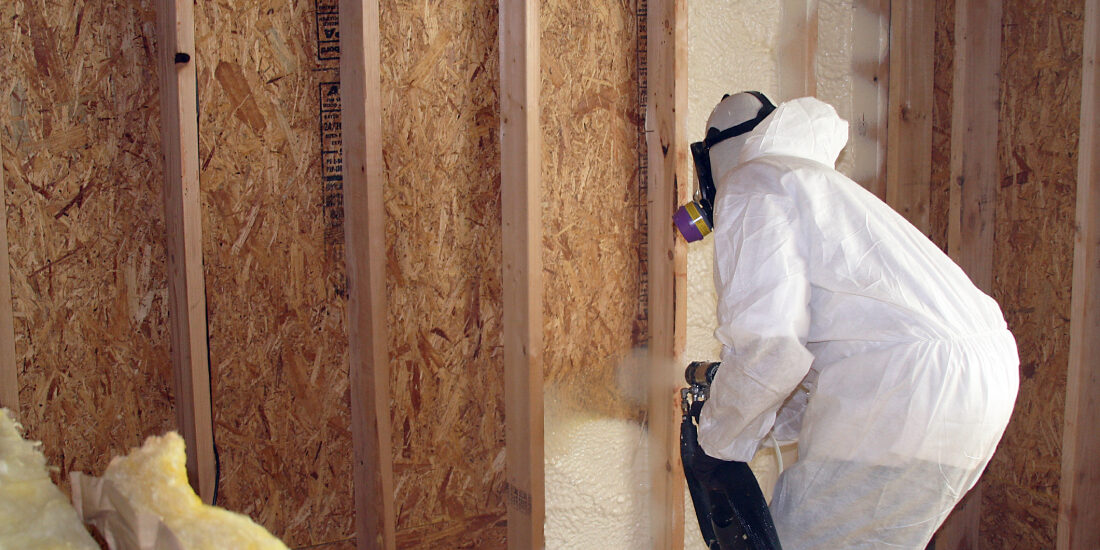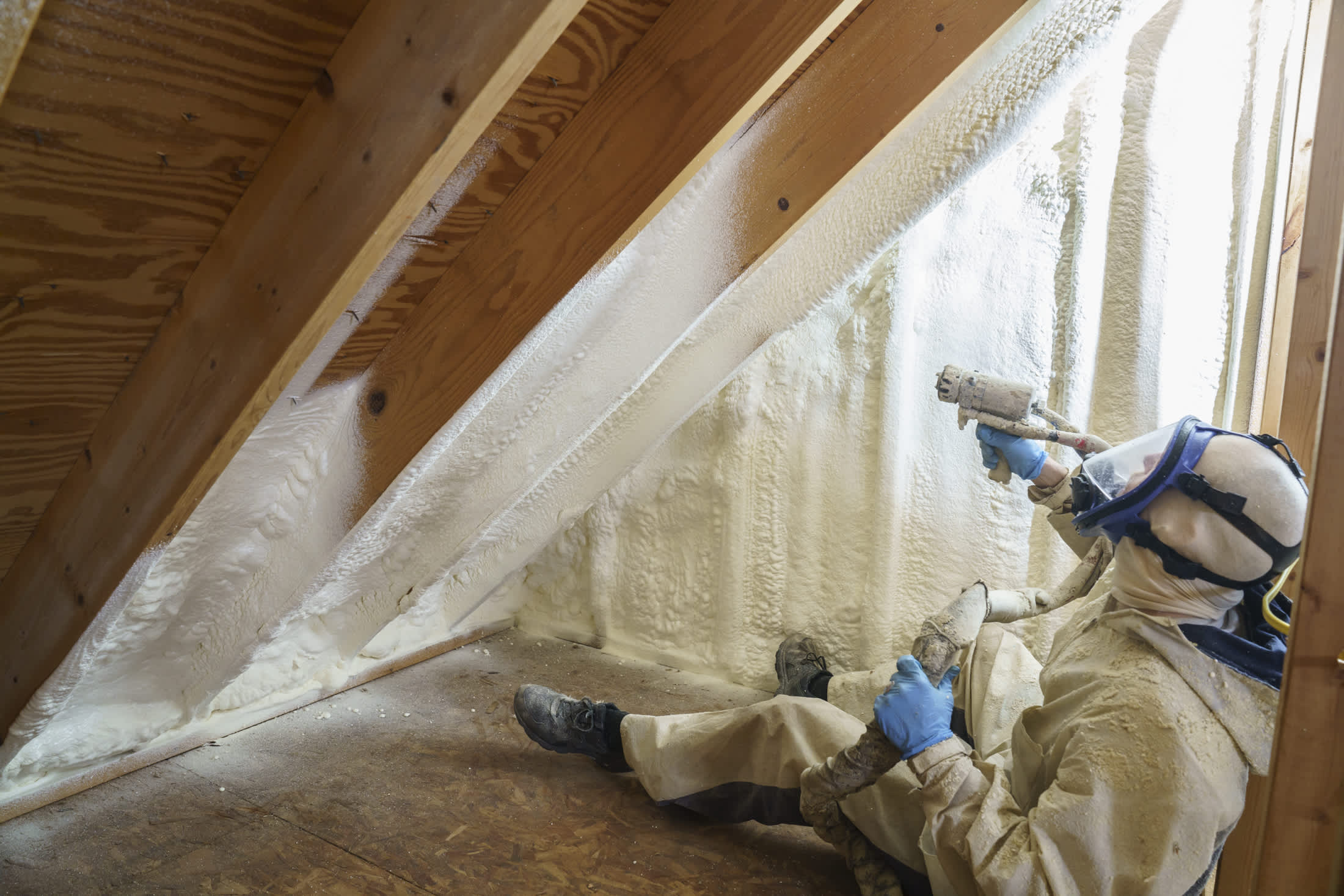How Professionals Ensure Proper Spray Foam Insulation in Seattle, WA
For homeowners in the Seattle area who want to ensure their spray foam project is done right, the first step is to speak with a qualified and certified expert.

Professionals ensure proper spray foam insulation in Seattle, WA by following a rigorous, multi-stage process that combines a deep understanding of building science with meticulous, technically precise installation practices. Spray foam is not a simple DIY product; it is a complex chemical system manufactured on-site, and its final performance is entirely dependent on the skill of the installer. A professional's job begins with a thorough assessment of the home, continues through detailed site preparation and safety protocols, and ends with an application process where every variable, from temperature to thickness, is carefully controlled. It is this expertise and attention to detail that guarantees a safe, effective, and durable result.
This article will break down the key stages of a professional spray foam installation, giving homeowners in the Seattle area a clear understanding of what a high-quality job looks like from start to finish.
Stage 1: The Diagnostic Assessment
A true professional doesn't just show up and start spraying. The process begins with a comprehensive assessment of the home to understand its specific needs. This is about more than just measuring square footage; it's about understanding how the house functions as a system.
An expert will:
- Inspect the Structure: They will look at the attic, crawl space, and walls to identify any pre-existing issues like moisture damage, rot, or pest infestations that must be fixed before insulation can be applied.
- Understand the Climate: In the unique marine climate of Seattle, managing moisture is just as important as managing heat. A professional will recommend the right type of foam (open-cell or closed-cell) for each part of the house based on its specific vapor control needs.
- Listen to the Homeowner's Goals: Are the primary goals to lower energy bills, fix uncomfortable rooms, or reduce outside noise? A professional will tailor their recommendation to meet these specific objectives.
This initial diagnostic phase is critical. It ensures that the proposed solution is the right one for the house and that any underlying problems are addressed, not just covered up.
Stage 2: Meticulous Site Preparation and Safety
The mark of a true professional is an unwavering commitment to safety and cleanliness. The spray foam application process requires strict protocols to protect both the installers and the home's occupants.
A professional crew will spend a significant amount of time on site preparation before any foam is sprayed. This includes:
- Containment: They will use plastic sheeting to mask off and protect all floors, windows, and any other surfaces that are not being sprayed.
- Ventilation: Powerful fans are set up to create negative pressure in the work area, continuously exhausting any vapors and overspray to the outside.
- Personal Protective Equipment (PPE): The installers themselves will be in full PPE, which includes a full-body disposable suit, gloves, and, most importantly, a fresh-air-supplied respirator to ensure they are breathing clean air at all times.
They will also clearly communicate the safety timeline to the homeowner, including the required 24-hour period after the job is complete before the space can be safely re-occupied without protection.
Stage 3: Precise Technical Application
This is where the installer's training and skill truly come into play. A professional is not just a person with a spray gun; they are a technician operating a complex piece of machinery. The spray foam rig is essentially a mobile chemical processing plant, and every variable must be perfectly controlled to create high-quality foam.
The Professional's Checklist for Quality
| Variable | The Professional's Approach | Why It Matters |
|---|---|---|
| Chemical Ratio | The proportioner machine is precisely calibrated to mix the two chemical components at a perfect 1:1 ratio. | An off-ratio mix can result in foam that is brittle, soft, or does not cure properly, leading to failure. |
| Chemical Temperature | The chemicals are heated in the machine to a specific temperature (usually 120-140°F) and kept warm in heated hoses. | Proper temperature is essential for the chemical reaction to occur correctly and for the foam to achieve its full expansion and R-value. |
| Substrate Condition | The installer will check the surface to ensure it is clean, dry, and within the correct temperature range for application. | Foam will not adhere properly to a wet, dirty, or frozen surface, which can cause it to pull away or fail. |
| Application Technique | The foam is applied in thin, even layers (called "lifts"), typically no more than 2 inches thick at a time. | Applying the foam too thickly can trap heat from the chemical reaction, which can scorch the foam and compromise its integrity. |
This technical precision is something that can only be learned through extensive training and experience.
Bonus Tip: You can often tell the quality of an installation by how it looks. Professionally applied spray foam should have a consistent texture and color, and it should be applied in even, well-defined layers. A lumpy, discolored, or cracked appearance can be a sign of a poor application. Recognizing a quality job is one thing; ensuring you get one starts with choosing the right contractor.

Things to Consider When Hiring a Professional
To ensure you are hiring a contractor who follows these best practices, it's important to do your homework.
- Ask for Certifications: Look for a company whose installers are certified by an industry organization like the Spray Polyurethane Foam Alliance (SPFA). This is a third-party verification of their knowledge and skill.
- Check Their Insurance: A professional contractor must be able to provide proof of both general liability insurance and workers' compensation insurance. This protects you and your property.
- Review Their Process: During the initial consultation, they should be able to walk you through their entire process, from the initial assessment to the final cleanup, with clarity and detail.
Key Questions to Ask a Prospective Contractor
What brand of spray foam do you use?
An expert contractor will have chosen their material supplier based on consistent product quality, technical support, and industry reputation. Their answer will reflect their experience and commitment to using quality materials.
How do you train your installers?
Look for a company that has a formal, ongoing training program. The best companies invest in keeping their teams up-to-date on the latest techniques and safety standards.
Can you provide local references?
Speaking to a few recent customers is one of the best ways to get a real-world sense of a company's professionalism, communication, and the quality of their work.
What kind of warranty do you offer?
A professional contractor will stand behind their work with a warranty on their installation, which is separate from the manufacturer's warranty on the foam material itself.
Will you perform any testing to verify the results?
While not standard on every job, a company that has the capability to perform a blower door test to measure the improvement in your home's air tightness is a company that is serious about delivering real, verifiable results.
The Difference Is in the Details
Ensuring a proper spray foam insulation job is about much more than just the material itself. It is about the expertise, precision, and professionalism of the people who install it. By following a rigorous process of diagnosis, preparation, and technically precise application, a professional contractor can deliver a final product that is safe, incredibly effective, and will perform for the life of the home.
Find a Certified Insulation Professional
For homeowners in the Seattle area who want to ensure their spray foam project is done right, the first step is to speak with a qualified and certified expert. A true professional can answer your questions, assess your home's specific needs, and provide a clear, transparent plan for a successful installation. The team at Cascadia Spray Foam Insulation of Seattle is composed of certified building science experts committed to the highest standards of quality and safety. They can be reached for a detailed consultation by email at info@cascadiasprayfoam.com or by phone at (425) 386-3500.
Reviewer: Olivia Thompson has spent 10 years working in spray foam insulation, helping companies grow their visibility. She reviewed this article and provided valuable suggestions on how to better align the content with the needs and expectations of customers, ensuring it resonates with the target audience.
